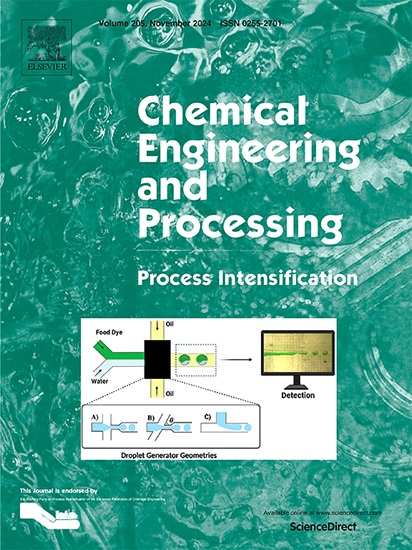基于混合模型的己二腈生产工艺强化与经济评价
IF 3.8
3区 工程技术
Q3 ENERGY & FUELS
Chemical Engineering and Processing - Process Intensification
Pub Date : 2025-04-17
DOI:10.1016/j.cep.2025.110325
引用次数: 0
摘要
己二腈(ADN)是用于生产尼龙66的关键化学品,在民用服装、专用设备和新能源汽车中具有潜在的应用前景。本文概述了一种由1,3-丁二烯氢化制己二腈的方法,并利用过程模拟和机器学习技术对其进行了改进。该系统进行了节能优化和经济评估。建立了人工神经网络(ANN)模型来预测ADN产品的摩尔流量和系统能耗。采用非支配排序遗传算法II (non - dominant Sorting Genetic Algorithm II, NSGA-II)进行优化,实现了提高ADN产率和降低系统能耗两个目标。预测结果表明,系统能耗和ADN产品流量的决定系数(R²)均大于0.989,平均绝对百分比误差(MAPE)值小于0.01。优化结果表明,系统能耗降低2.31%,ADN产品流量增加1.85%。本文章由计算机程序翻译,如有差异,请以英文原文为准。

Process intensification and economic evaluation of adiponitrile production based on hybrid modeling
Adiponitrile (ADN) is a crucial chemical used to produce Nylon 66, with potential applications in civilian clothing, specialized equipment, and new energy vehicles. This paper outlines a method for producing adiponitrile from 1,3-butadiene hydrocyanation and enhances it using process simulation and machine learning (ML). The system is optimized for energy savings and assessed economically. An artificial neural network (ANN) model is developed to predict ADN product molar flow and system energy consumption. The Non-dominated Sorting Genetic Algorithm II (NSGA-II) algorithm is used to optimize two goals: increasing ADN yield and reducing system energy consumption. The prediction results show that the coefficient of determination (R²) for both system energy consumption and ADN product flow is greater than 0.989, with the Mean Absolute Percentage Error (MAPE) value less than 0.01. The optimization results indicate a 2.31 % reduction in system energy consumption and a 1.85 % increase in ADN product flow.
求助全文
通过发布文献求助,成功后即可免费获取论文全文。
去求助
来源期刊
CiteScore
7.80
自引率
9.30%
发文量
408
审稿时长
49 days
期刊介绍:
Chemical Engineering and Processing: Process Intensification is intended for practicing researchers in industry and academia, working in the field of Process Engineering and related to the subject of Process Intensification.Articles published in the Journal demonstrate how novel discoveries, developments and theories in the field of Process Engineering and in particular Process Intensification may be used for analysis and design of innovative equipment and processing methods with substantially improved sustainability, efficiency and environmental performance.

 求助内容:
求助内容: 应助结果提醒方式:
应助结果提醒方式:


